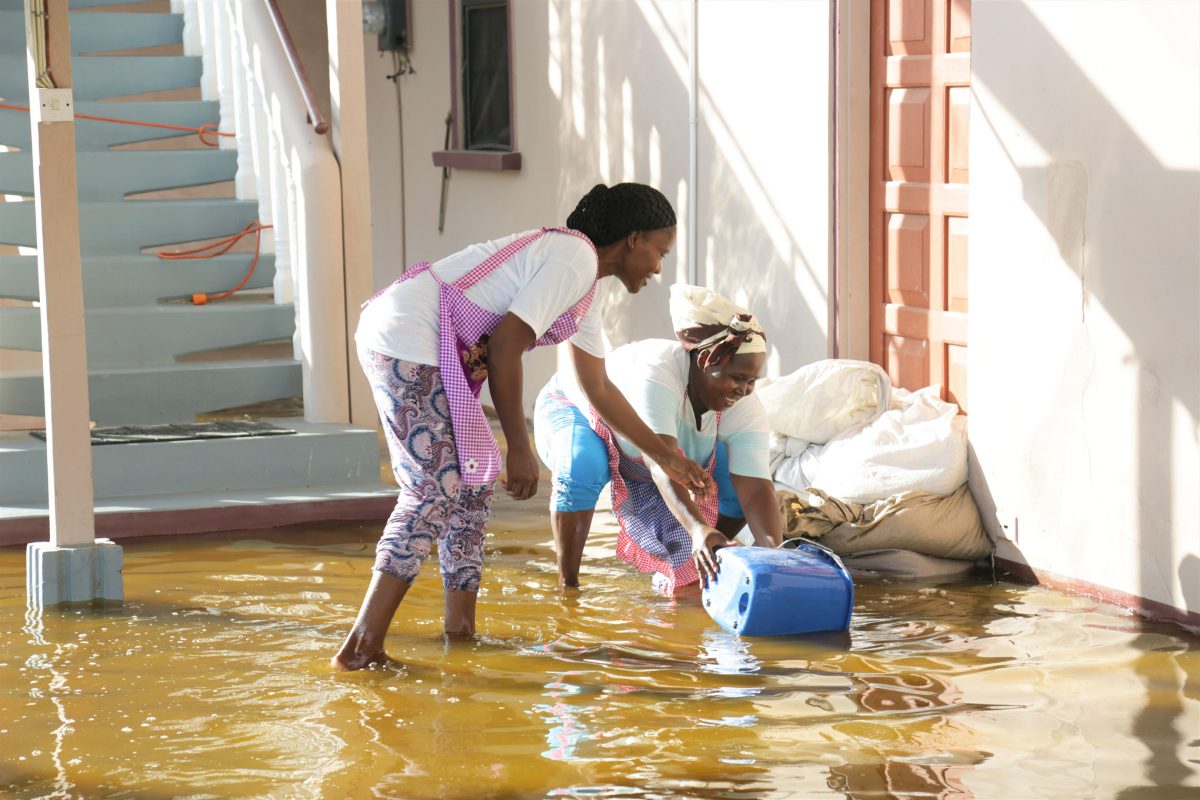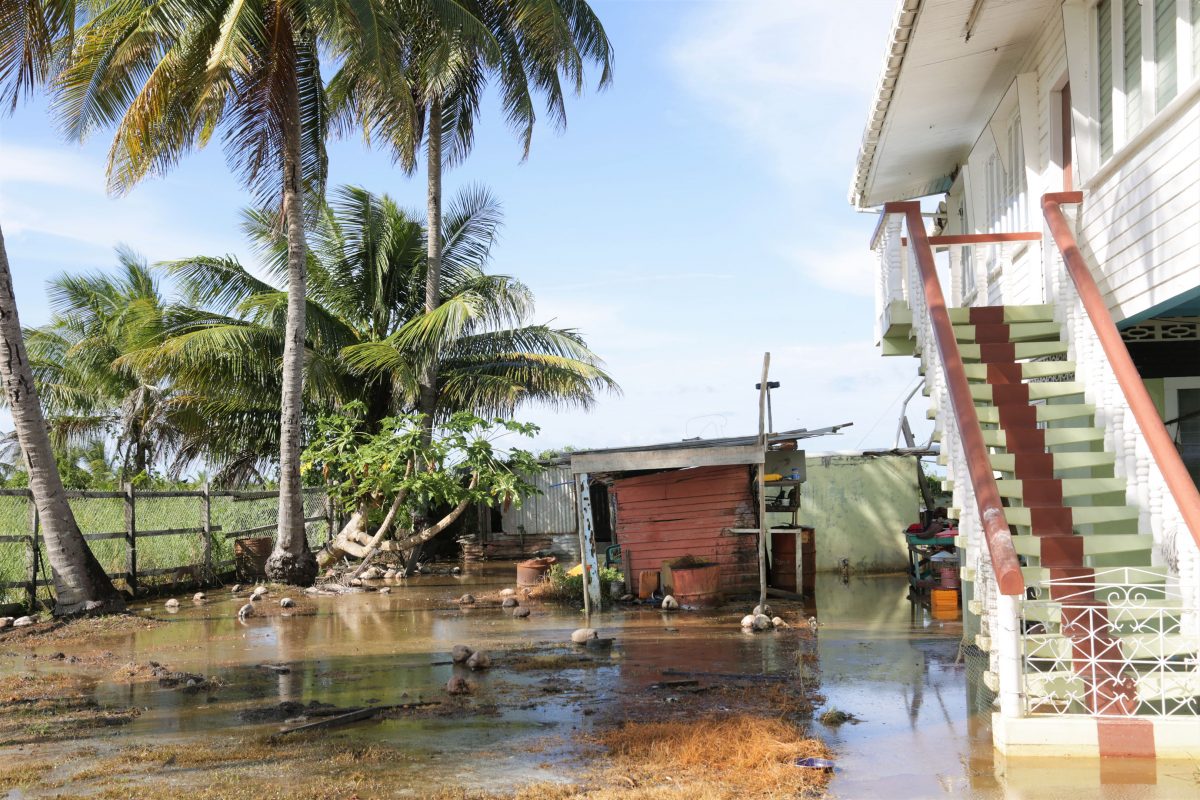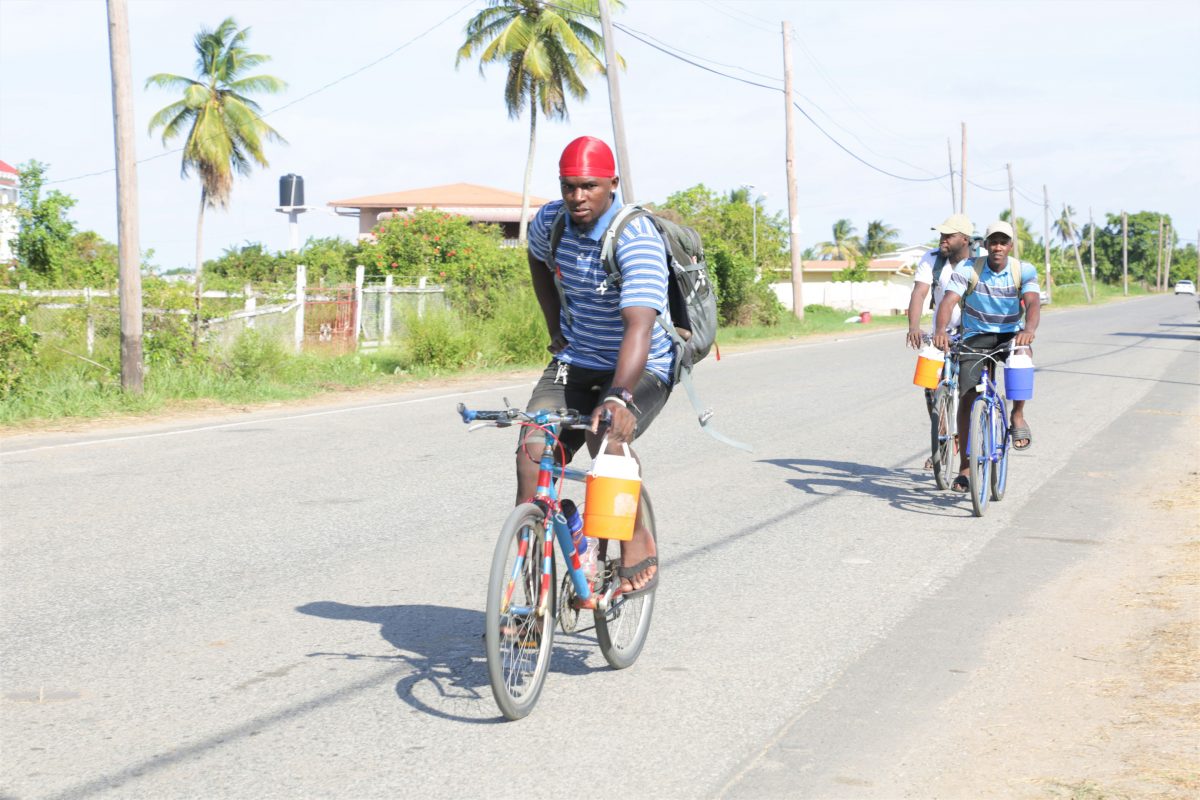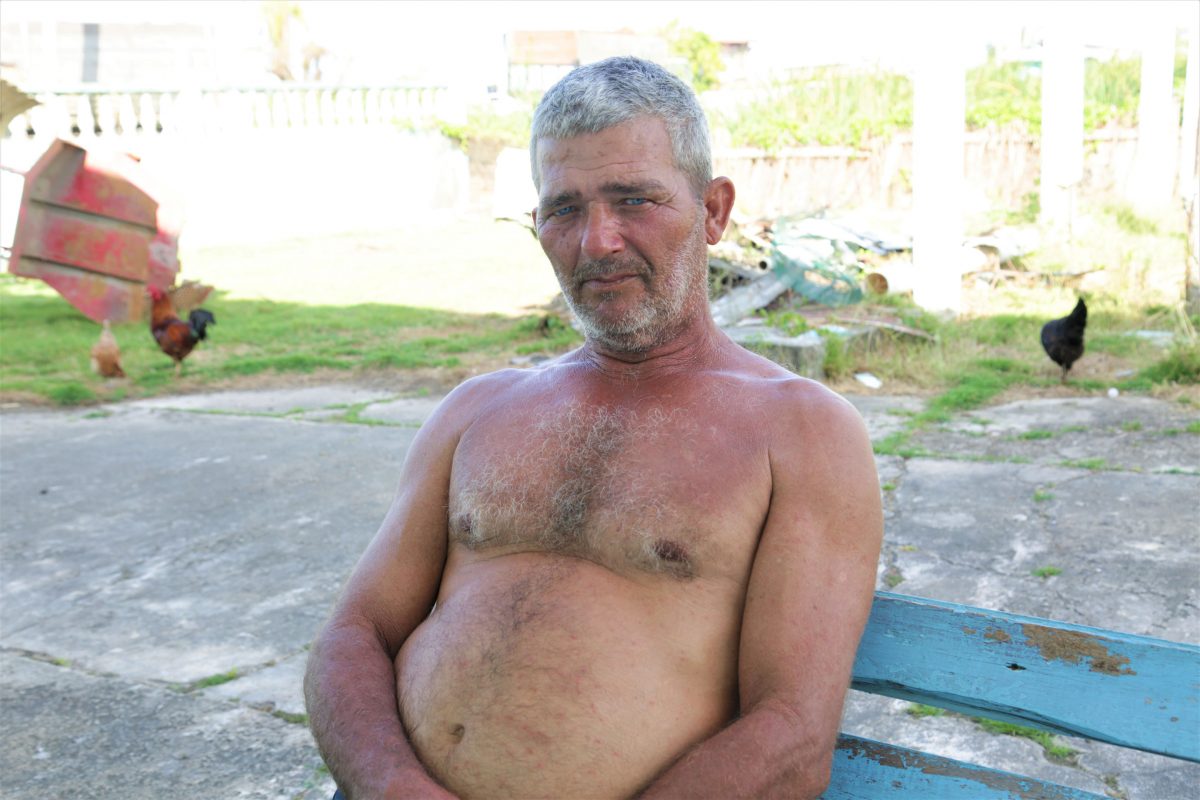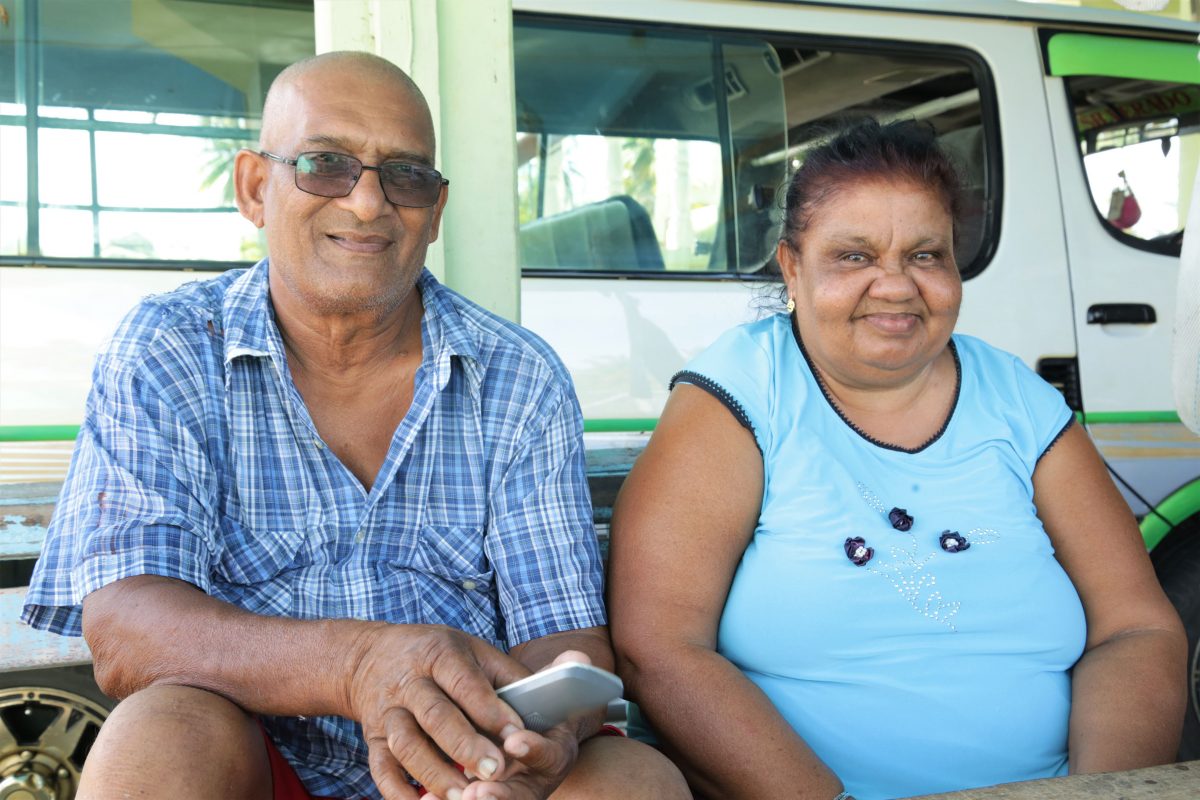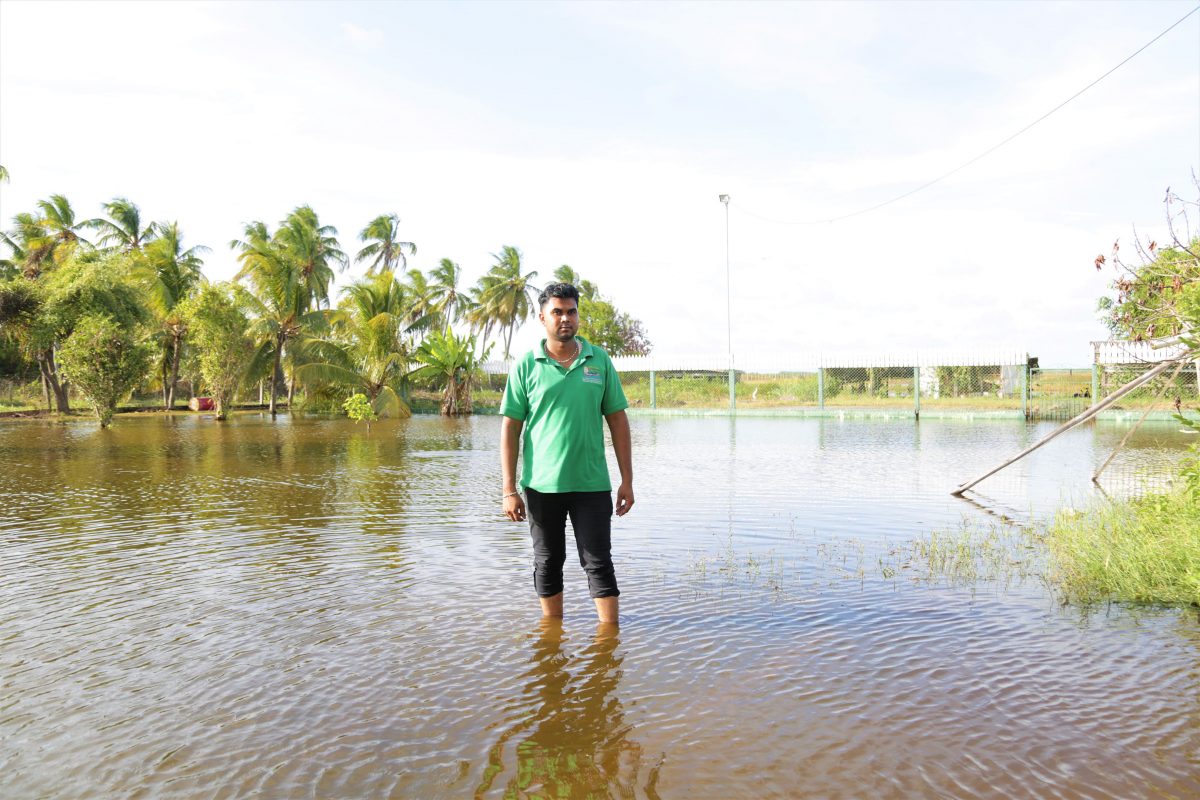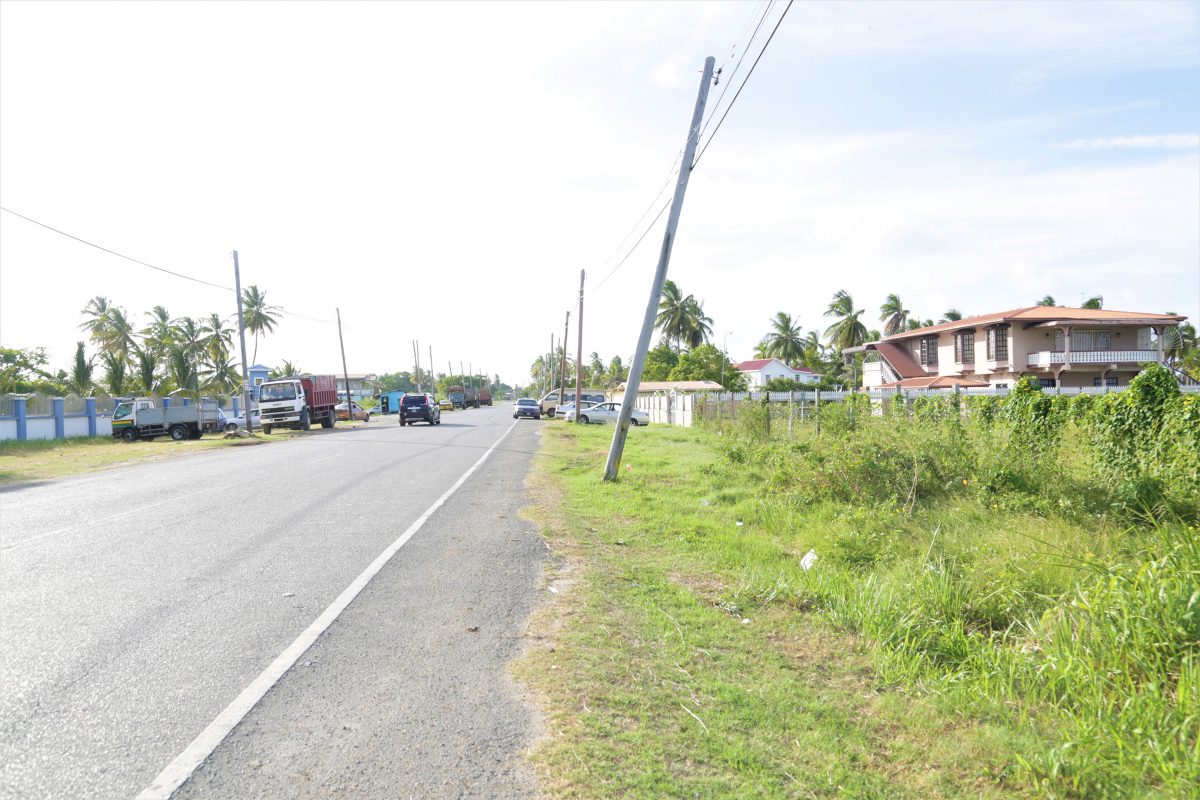Strangroen is a tiny community in Mahaicony, East Coast Demerara. Its handful of families have a total of 25 members, most of whom are grown and are employed in the rice fields or at Rayaadul Rice Industries in the village.
The name Strangroen is of Dutch origin and loosely translates to beach green but why it was named so, no one knows for sure.
Because it is bordered by the Atlantic Ocean on one side, Strangroen was one of several communities that was flooded owing to the breaking of the sea dam on Saturday last in Rebecca’s Rust, eight villages away after the coming of the spring tide. Not only did residents have the Atlantic in their front yards, but some of the creatures that call the ocean home were trapped there also.
Bus driver Mohan Tilack was at home. He lives with his wife and son in a bottom flat as they are caretakers of the property belonging to a relative abroad. The man should have been at work, but he was needed at home to fortify their doors with sandbags and assist his wife in cleaning their flooded home.
The Tilacks have been living in Strangroen for 21 years after returning from Suriname. Tilack was originally from East Berbice, and his wife was from West Coast Demerara. They migrated to Jarikaba, Suriname in 1979 and they worked there in the banana fields. He explained that they decided to leave during the black-market time under the Burnham regime. Then prior to the 1992 general elections, Cheddi Jagan had visited Suriname and promised that if he was the next president, things would be better. Not sure if that was true, the Tilacks, a family of five by then, did not return immediately.
After a visit to Guyana in 1994, they decided to return and did so in 1995. Things, according to them, were looking up at the time as Suriname’s currency had devalued before they left. While the man and his wife agreed that things were better economy-wise, they admitted that they wished they had stayed in the Dutch country instead of settling in the Dutch-named village. They shared that they had received citizenship and were afforded a plot of land, but they left it and returned. Asked if they had the opportunity to return now if they would, the husband and wife said they are too old now to return and try to build a life from scratch.
After returning the family had lived with relatives on the West Coast, before choosing to move to Mahaicony. Tilack worked at the rice mill for several different owners. He and other workers left after money owed to them was not paid. At the time he left, the mill was under Caribbean Rice Industry and run by a Surinamese man named Guptar. According to the man, though he went to court and won his case, when he went to collect outstanding monies, he was told that the mill had changed ownership and nothing else was done about it. Guptar’s whereabouts are unknown.
Some years after leaving his job at the mill, Tilack had managed to save enough to purchase a minibus. A normal day finds him making only one round trip, which is from Georgetown to Rosignol and back. Only on Saturdays does he manage two trips. Asked whether there were fewer persons travelling, the 68-year-old man said that was not the reason for him only being able to make one trip. He believes there are more buses on the road. On Saturdays, when there are less buses running the Berbice to Georgetown route, he manages the two trips. The weekend trips are very much needed for the Tilacks to provide for their needs and pay bills. The woman mentioned that they have to pay electricity, water, phone, and internet bills. She said the electricity bill is $9,000 every month and she cannot understand why it is so high. In addition, she said, the water bill used to be $700+ a month but has since almost doubled to almost $1,400.
Tilack added that he used to pay $1,500 for fitness for his bus and now he pays $3,000; the driver’s license has raised also. “During the PPP time, onion was $60 a pound, gas was cheaper, light bill and water bill was cheaper, everything was cheaper, and everybody know that that’s a fact. I’m not saying that I’m backing PPP but I’m telling you the truth about my experience. If this government did do good by me, I would have tell you yes, they did good but I’m telling you how it is. If somebody says that this government is doing better for the people them that is their opinion; maybe they are getting it better, not me. Everything raise and you’re not getting the money to pay for them,” Tilack said.
Prior to this flood, the only other time Strangroen was flooded while they were living here, was in 2005 but it was nothing like this. The woman said that back then only the yard had water, but this time around the water entered the house and flooded her kitchen. The 2005 flood had killed 29 ducks, and meat birds. With the recent flooding, their poultry animals have gone missing and they assumed that caimans may be responsible as they noted that the nearby canals are filled with the reptiles.
Tilack said that there are no places of worship in the village, so his family would visit the temple in De Hoop, Mahaicony. The village has little shops, snackettes and a canteen belonging to the rice mill.
The mill employs numerous persons inside and outside of Strangroen. Many farmers arrive with their paddy filled trucks from as far as Mahaica to Berbice and line the road in Strangroen when crop is on and currently the fields were being harvested.
While I was talking with the Tilacks, their neighbour, whom they called ‘Putagee’ arrived to tell them about their cows. Tilack takes care of 18 cows for the owner for the house and the flooding has left him trying to figure where to move them to as the opposite side of Strangroen is all rice fields.
Back at his house Ian Gonsalves, also known as ‘Putagee,’ was seated in his verandah with his wife. He was catching his breath from taking care of farm animals. Originally from Lethem, he told me: “I’m living here 15 years now. It was 14 of us, 7 brothers, 7 sisters and my mother when we move and come here; I was 9 when we come. We move this side during the hard time, in Burnham time.
“We had shop up in Lethem and meh ole bai, he did name Jardine. Before we did leff, we used to run the shop and do maintenance and after he died, we come away. We used to come to town and buy clothes and ration and take back. We used to travel with the Skyvan. The Skyvan used to carry in goods to Lethem and bring out meat to Georgetown from there. Me and my father used to go hunting for deer and labba for home use to make pepperpot. The Amerindians make tuma pot and we make pepperpot. Is like the same thing except we own had the cassareep and them own did had more pepper…”
The place he lives at was left in his care by relatives who reside abroad. He takes care of the relatives’ cattle and works as a labourer; he also has a flock of sheep of his own. Living in Strangroen, Gonsalves said, is peaceful. The breezy atmosphere has him sleeping with his windows open at night.
Speaking about the current situation, the man said the breakaway of the sea dam led to flooding in the surrounding villages. Prior to my arrival he had returned from the savannahs since he had to move over 30 head of cattle. Because the pastures were flooded and there were only rice fields left on the other side, Gonsalves took the cows four villages away to De Hoop. The floodwaters had reached as high as his waist in the pastures. “This life is not easy,” he said. “You see sometimes when rain ain’t fall, the pastures ain’t got none grass and when we cut rice, we got to tek rice straw and fetch it and give the cow them. Sometimes it got grass. Now we got the flood. We don’t get flood here. One time we had flood here and that was in 2005 and that was rainfall flood. That time we had like 30-something calves that dead out fuh we. Is two days now this place flood and the water can’t drain off properly. They block the main trench because they say they got to protect them rice. Them block the trench so the water won’t come in and destroy the rice but after the water coming rapidly, it still come in anyway. They block a twenty-feet trench with a two-feet koker. What sense it make? The rice farmers them out it in like five mornings ago and still them rice duck. Now they open it to drain off the water. I went to Rebecca’s Rust and I see what going on there. They put pontoons and boulders to block the water from coming in but that ain’t make sense. The water push the pontoons away. That place got to pile off with steel pile. Now today and tomorrow they say the water will come the highest. I sit down in a shop at High Dam [Rebecca’s Rust] and see what the waves doing. I see a tree keep bending and bending from the waves and eventually it root out and wash away.”
Across from the mill, canteen workers sat chatting. The canteen is situated in front of the manager’s home that was surrounded with water. Sandbags sat at the doorway to prevent water from getting into the house.
Assistant Manager of the rice mill Omesh Singh had just returned with some rope he intended to use to make a clothesline in the upstairs of his house as downstairs was flooded. He only moved to Strangroen less than three months ago. Singh took me around the concreted yard to show how high the receding flood waters were. When the Atlantic rushed in, it flooded all the ponds and thousands of fish swam about Singh’s yard, hurris and patwas but most were the silver bait fish commonly called ‘kaka belly’. As we walked, they squished beneath our boots, possibly 50 of them with each step. Singh showed me a photo on his phone that he had taken the previous day of half a bucket of hurris. Two domestic workers, still attired in their aprons, seeing the huge hurris swimming, became excited and soon found themselves a bucket and went fishing. A young boy joined the two women and while they fished with a bucket, he kicked the fish out of the water.
